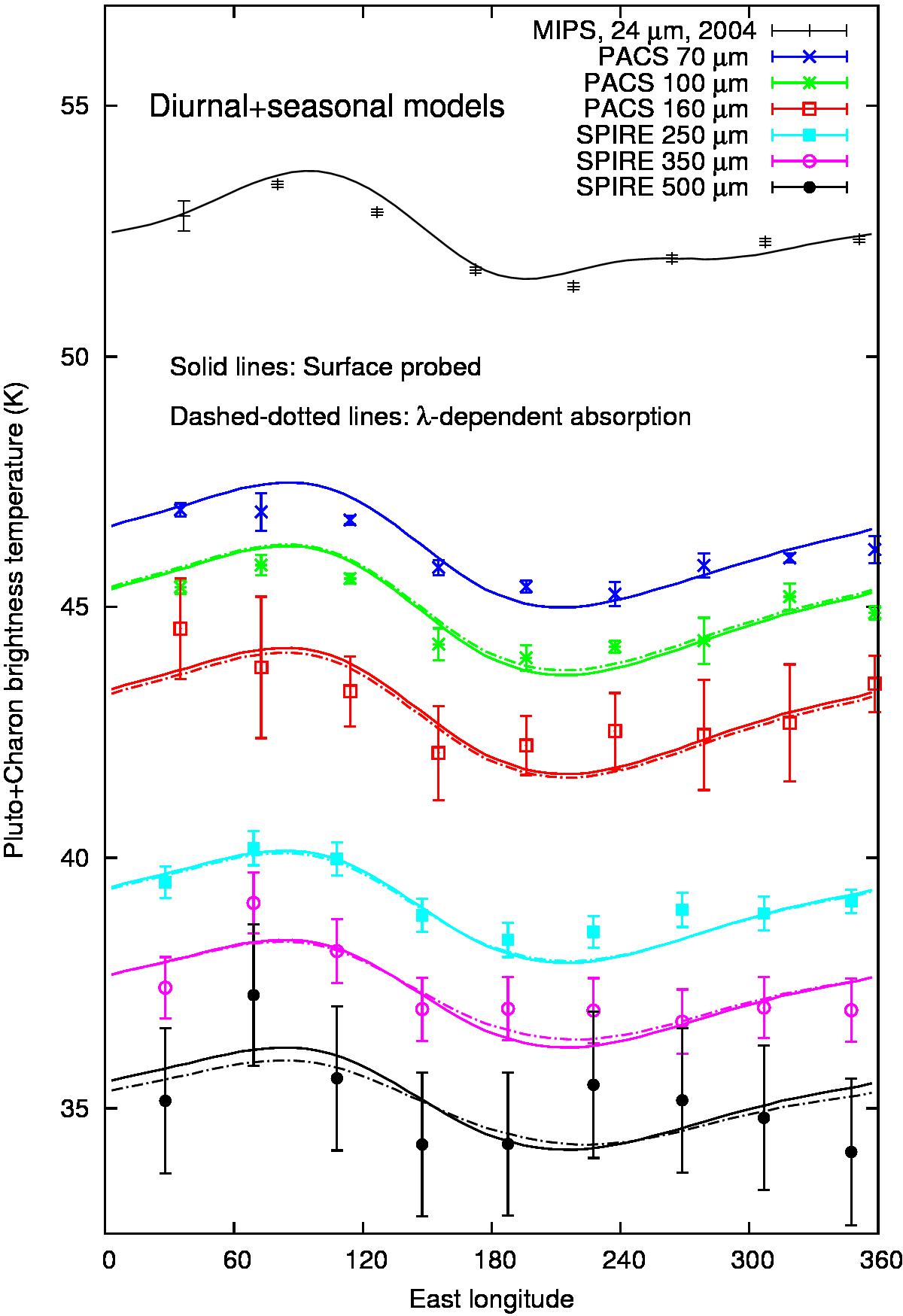Fig. 8

Fits of the Spitzer 2004 (black points at top) and Herschel 2012 (all other points) brightness temperatures of the Pluto-Charon system using a seasonal+diurnal model. The seasonal thermal inertia is 2000 MKS. Solid lines: model assuming that radiation originates at the surface at all Herschel wavelengths (case 4b in Table 2). Dashed lines: same, but using the wavelength-dependent absorption coefficient from Fig. 5 (case 6b).
Current usage metrics show cumulative count of Article Views (full-text article views including HTML views, PDF and ePub downloads, according to the available data) and Abstracts Views on Vision4Press platform.
Data correspond to usage on the plateform after 2015. The current usage metrics is available 48-96 hours after online publication and is updated daily on week days.
Initial download of the metrics may take a while.


